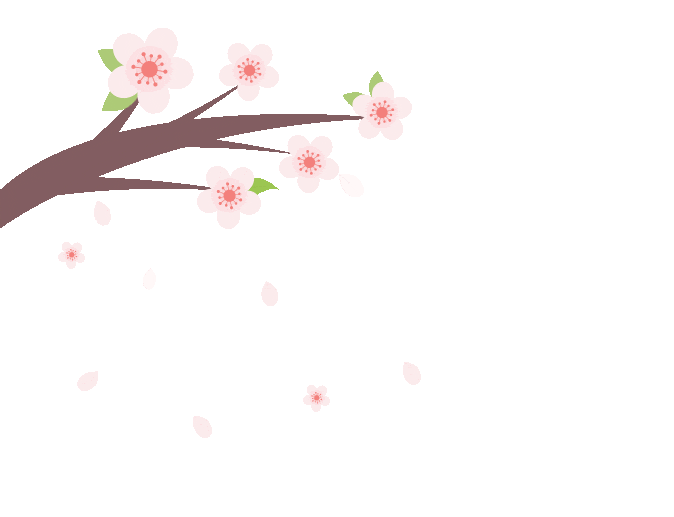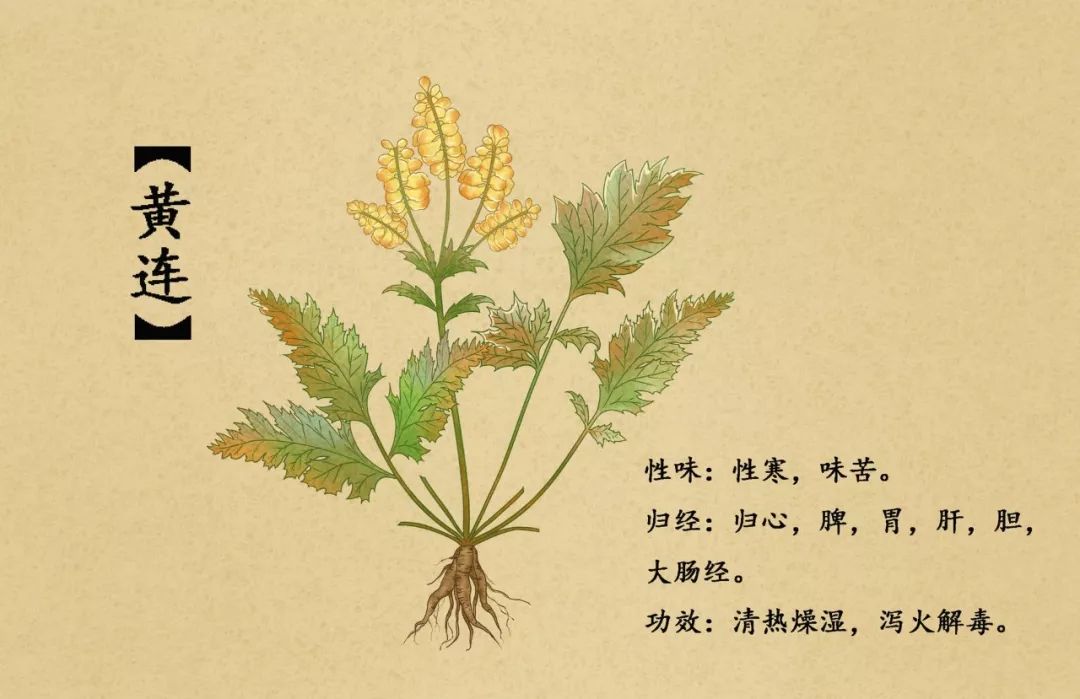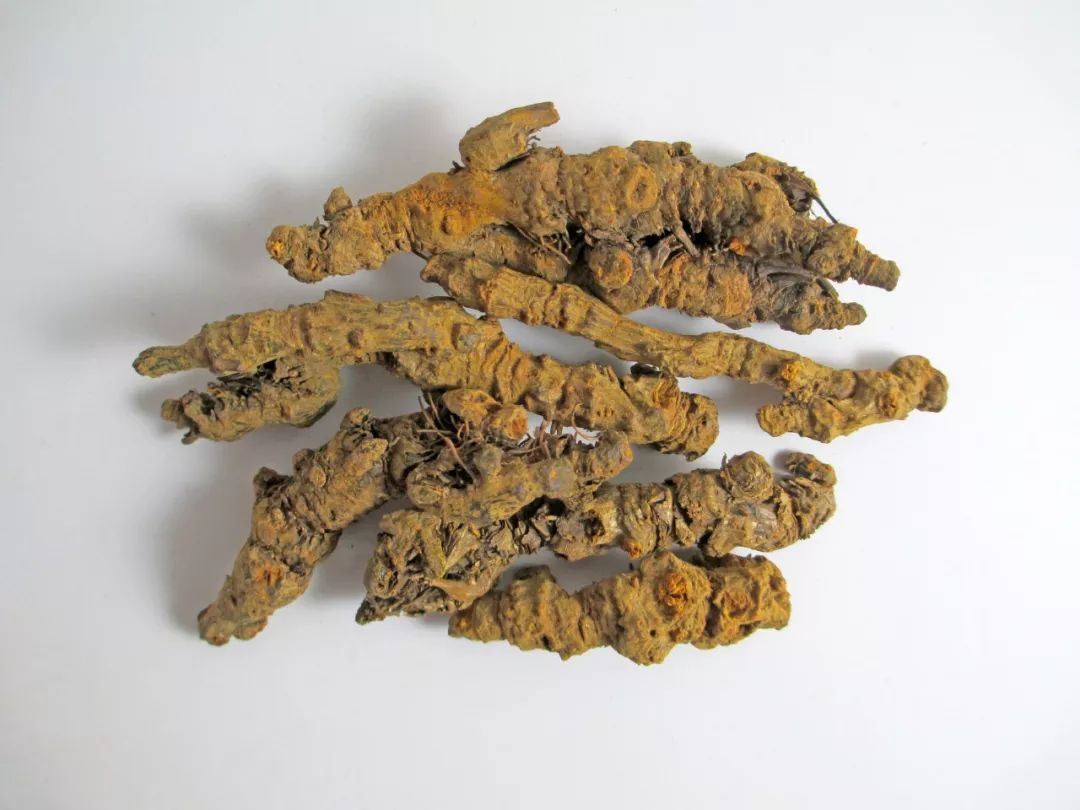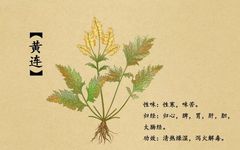
Ants move houses, little by little they build mountains;
TCM popular science, accumulating little by little.
“Ant TCM” aims to popularize TCM knowledge,
Let your health and wellness be like divine assistance!
Written by: Pan Jiyang, Associate Professor, Beijing University of Chinese Medicine

“Playing the lute under the Huang Lian tree—finding joy in bitterness,” “First eat Huang Lian then honey—bitter ends sweet,” “A mute eats Huang Lian—unable to speak,” everyone knows that Huang Lian (Coptis) is very bitter, but why is it so bitter?

 Clearing heat and detoxifying is its primary function.
Clearing heat and detoxifying is its primary function.
Huang Lian is first recorded in the “Shen Nong’s Herbal Classic”: “Huang Lian, bitter and cold in nature, treats heat, eye pain, and injuries to the eyes, causing tears. It brightens the eyes, alleviates diarrhea, abdominal pain, and dysentery, and reduces swelling and pain in women’s genitalia. Long-term use leads to forgetfulness. Also known as Wang Lian, it grows in river valleys.” It is classified as a superior herb. The “Compendium of Materia Medica” states: “Its root is yellow in color, hence the name.”
According to the 2015 edition of the “Pharmacopoeia of the People’s Republic of China”, Huang Lian is derived from the dried rhizomes of the Ranunculaceae family plants Huang Lian, Sanjiao Huang Lian, or Yun Lian. These three are commonly referred to as “Wei Lian”, “Ya Lian”, and “Yun Lian” respectively. Its properties are bitter and cold, and it enters the Heart, Spleen, Stomach, Liver, Gallbladder, and Large Intestine meridians. It can clear heat, dry dampness, and detoxify.
Huang Lian has different processed forms, such as Jiu Huang Lian, which is good for clearing heat from the upper jiao, often used for red eyes and oral ulcers; Jiang Huang Lian, which clears the stomach and stops vomiting, used for cold-heat complex, damp-heat obstruction, and fullness with vomiting; and Yu Huang Lian, which soothes the liver and stomach and stops vomiting, used for disharmony between the liver and stomach, vomiting, and acid reflux. The typical dosage for internal use is 2-5 grams, and for external use, an appropriate amount.

To understand why Huang Lian is bitter, we must look for answers in modern research. The medicinal part of Huang Lian is its rhizome, which contains various isoquinoline alkaloids. Berberine, also known as Huang Lian Su, is the main component of Huang Lian, with a content of up to 10%, followed by coptisine, methylcoptisine, and palmatine. The source of Huang Lian’s bitterness is berberine, which is a type of alkaloid isolated from Huang Lian and is the main effective antibacterial component of Huang Lian, appearing as yellow needle-like crystals with an extremely bitter taste. Experiments have shown that even when 1 part of berberine is dissolved in 250,000 parts of water, it still retains its bitterness. No wonder Huang Lian is so unbearably bitter!
 Applications of Huang Lian
Applications of Huang Lian
Huang Lian has a history of over two thousand years of application, with numerous famous and effective formulas. Below are some commonly used formulas for your reference.
[Formula for Treating Styes]
Formula 1: 30 grams of Tai Zi Shen (Pseudostellaria), 15 grams of Bai Zhu (Atractylodes), 9 grams each of Dang Gui (Angelica), Jing Jie (Schizonepeta), Jin Yin Hua (Honeysuckle), Lian Qiao (Forsythia), Huang Qin (Scutellaria), Zhi Shi (Aurantii Fructus), 6 grams of Bai Shao (White Peony), and 3 grams each of Huang Lian and Gan Cao (Licorice). Decoction for internal use.
Formula 2: 15 grams each of Sheng Shi Gao (Gypsum), Qian Li Guang (Dandelion), 9 grams of Hua Shi (Talc), 6 grams each of Huang Qin, Jie Geng (Platycodon), and Shu Da Huang (Rhubarb), and 3 grams each of Huang Lian, Qiang Huo (Notopterygium), Chuan Shao (Paeonia), Fang Feng (Saposhnikovia), Chan Tui (Cicada), and Gan Cao. Decoction for internal use.
Formula 3: Equal parts of Huang Lian, Huang Qin, Huang Bai (Phellodendron), Da Huang (Rhubarb), and Mang Xiao (Mirabilite), ground into powder and mixed with honey for external application.
Function: Clears heat, detoxifies, reduces swelling, and alleviates pain.
Formula 1 is more effective for clearing heat and detoxifying, tonifying Qi and strengthening the Spleen, used for “weak type styes” with loose stools and fatigue, with a thin pulse and white coating; Formula 2 is more effective for clearing heat and detoxifying, dispelling wind and alleviating pain, used for red, swollen, and painful eyelids, headache, constipation, with a rapid pulse and yellow greasy coating, known as “excess heat type styes”; Formula 3 is for external use and can be used for all types of styes.
Main indications: Styes, which are acute purulent inflammations of the sebaceous glands or meibomian glands near the hair follicles of the eyelashes.

[Si Huang Powder]
Composition: 10 grams each of Da Huang, Huang Lian, Huang Qin, and Huang Bai.
Function: Clears heat, detoxifies, dries dampness, and promotes blood circulation.
Main indications: Eczema, tinea pedis, and skin diseases such as sores and boils.
Usage: Can be taken internally or powdered and mixed with honey for external application.
[Huang Lian Skin Moisturizing Ointment]
(Originally a family secret recipe from TCM practitioner Wu Youcheng)
Composition: 30 grams of Huang Lian, 60 grams of Huang Bai, 60 grams of Dang Gui Wei (Angelica tail), 90 grams of Zi Cao (Lithospermum), 60 grams of Sheng Di Huang (Rehmannia), 1000 milliliters of sesame oil, and 180 grams of beeswax.
Preparation: Soak the first five ingredients in oil for more than a day, then slowly fry until the herbs are dry, filter out the residue, add beeswax, and cool to form a purple-red soft ointment.
Function: Cools, stops bleeding, detoxifies, alleviates pain, has antibacterial and anti-inflammatory properties, and promotes tissue regeneration.
Main indications: Burns, conjunctivitis, blepharitis, dry nasal inflammation, fungal and staphylococcal skin infections, and various ulcers.
(The above formulas should be used under the guidance of a qualified physician!)
 Precautions for Using Berberine Tablets
Precautions for Using Berberine Tablets
Berberine is an alkaloid extracted from Huang Lian and other herbs, and berberine tablets made from it are commonly used in daily life and travel. How should we use them correctly in our daily lives?
Berberine, as a traditional preparation for treating bacterial infections in the intestines, has long been included in the national essential drug list, is very safe, and is cost-effective. Moreover, berberine is almost not absorbed by the gastrointestinal tract after oral administration, remaining in the intestines to combat pathogenic bacteria. This characteristic, while making berberine ineffective against infections outside the gastrointestinal tract, also means it has very few side effects since it is not absorbed into the bloodstream. (Note: Hydrochloride of Berberine, commonly known as Berberine Hydrochloride)
Precautions when using berberine tablets:
1. Contraindicated for those allergic to this product and patients with hemolytic anemia.
2. Should be avoided by children with hereditary glucose-6-phosphate dehydrogenase deficiency.
3. Use with caution during the first three months of pregnancy.
4. If severe adverse reactions occur due to overdose, seek medical attention immediately.
5. Do not use if the product’s properties change.
6. Children must use under adult supervision.
7. Keep this product out of reach of children.
8. Berberine should not be taken with tea. Avoid drinking tea within 2 hours before and after taking berberine. The tannins in tea can combine with the alkaloids in berberine to form insoluble tannate precipitates, reducing the efficacy of berberine. Also, other herbs containing tannins such as Da Huang, Wu Bei Zi, Ce Bai Ye, Di Yu, Jin Ying Zi, and Ku Shen should not be taken together.
Editor | Manman
Source | “TCM Health and Wellness” May 2018 issue
For reprints | Authorization required | Please indicate the source
Warm Reminder
If you like this article, please share it with your friends. For more information, please follow me.
Past Highlights Review
Liang Wei Di Huang Wan was originally used to treat children’s diseases?! This is a story about a Chinese medicine…
A point between the eyebrows can treat eye diseases and enhance beauty.
There are many types of colds; for clearing heat and detoxifying, choose Huoxiang Zhengqi like this—

TCM Health and Wellness
Official Account

Ant TCM
(Authoritative “Health + Science”, assisting the health of the nation)

Click “Read the original text” to quickly order the magazine

